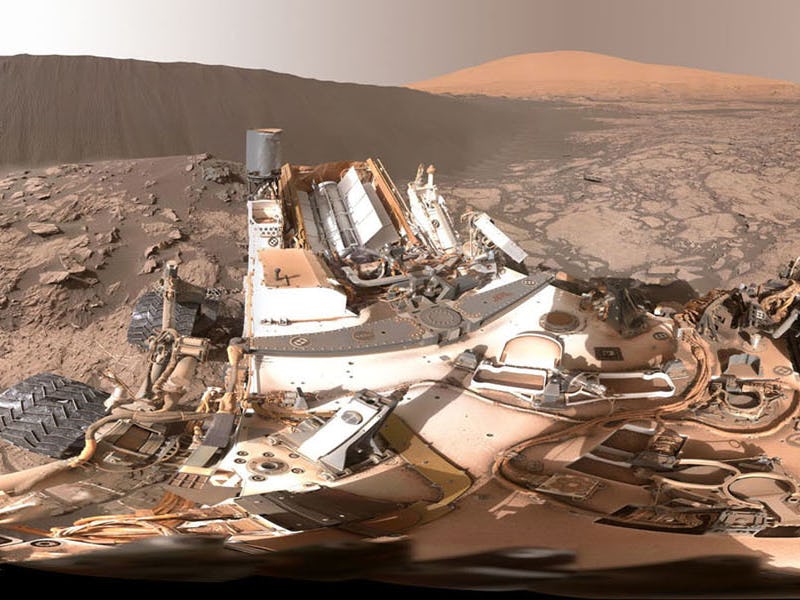The Steep Sand Dunes of Mars are Seen Up-Close In These New NASA Images
Behold the wind-blown sand dunes of Mars.

The Curiosity Rover has sent back images of a sand dune measuring 13 feet in height, boasting an incredibly steep downwind slope. It’s the first image of a dune like this on Mars — and the dunes, blown by Martian winds, react much in the same way they do on Earth’s deserts.
“As on Earth, the downwind side of a sand dune has a steep slope called a slip face,” reads an announcement by NASA about the Martian landscape. The latest images are part of a dune investigation campaign by Curiosity that’s “designed to increase understanding about how wind moves and sorts grains of sand, in an environment with less gravity and much less atmosphere than well-studied dune fields on Earth.”
Curiosity captured these images back of the “Namib Dune” on December 17:
This view of the downwind face of "Namib Dune" on Mars, including a portion of Mount Sharp on the horizon.
The high winds that cause the slip-side of the dune to become so steep also push the dunes about one yard every Earth year.
Curiosity won’t dare to attempt to roll over the dune — within the greater Bagnold Dunes on the planet — it’s currently going around it.
This December 17, 2015, view combines multiple images from the telephoto-lens camera of the Mast Camera (Mastcam) on NASA's Curiosity Mars rover to reveal fine details of the downwind face of "Namib Dune."
Unfortunately, Curiosity did not capture any sand sliding down the face of this steep dune. Most of that activity likely happens during Mars’ southern summer, rather than now, its late fall.
Curiosity has been rolling around Mars since August 12, 2012 — or 1,196 Martian days, or sols. Back in November, it first reached the epic Bagnold Dunes. Curiosity reached the base of Mount Sharp in 2014; its mission now is to explore Sharp’s higher layers.